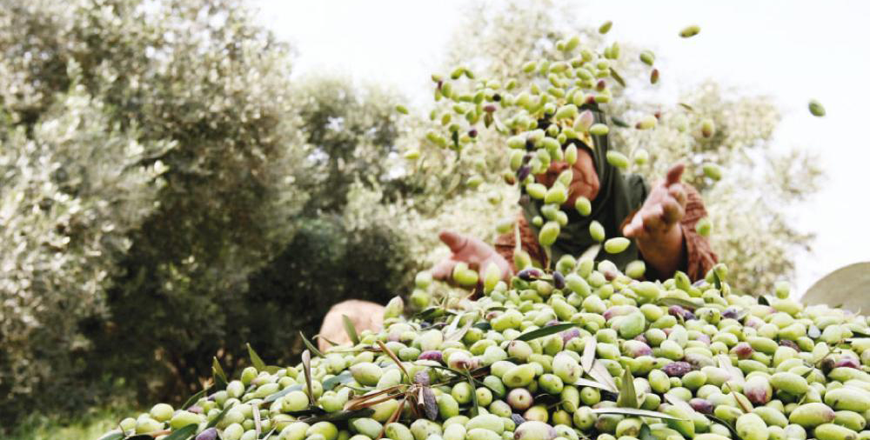- This topic is empty.
- AuthorPosts
- February 7, 2025 at 7:12 am #555855

Olives, known for their health benefits and culinary uses, are grown in various parts of the world, particularly in Mediterranean climates. While olive cultivation is an important agricultural activity with significant economic value, it is not without its challenges.
From environmental factors to pests and diseases, olive farmers face numerous obstacles that can affect their yield and quality.
Understanding these challenges is crucial for addressing them and ensuring the sustainability of olive farming. This article explores the key difficulties faced by olive cultivation and the efforts to overcome them.
1. climatic and environmental constraints
Olive trees thrive in Mediterranean climates, which are characterized by hot, dry summers and mild, wet winters. However, changes in climate patterns, such as rising temperatures, irregular rainfall, and prolonged droughts, have posed significant challenges to olive cultivation.
Olive trees are particularly sensitive to extreme weather events, such as frost and excessive heat, which can damage fruit and reduce yield. Additionally, water scarcity is a growing concern in many olive-growing regions, as it affects irrigation practices and reduces tree growth. Climate change has therefore become a critical factor impacting the stability and productivity of olive crops.
2. soil and water management issues
Olives require well-drained soils with good aeration for optimal growth. However, many olive orchards are located in areas with less than ideal soil conditions, such as soils that are too alkaline or too salty. These soil conditions can hinder root development and affect the overall health of the trees.
Additionally, the efficient management of water is a major challenge in olive cultivation, particularly in regions facing drought or water scarcity. Olive trees have deep roots and can survive in low-water conditions, but consistent irrigation is necessary to ensure high fruit production. Without proper soil and water management practices, olive growers may experience lower yields and poor-quality fruit.
3. pests and diseases
Pests and diseases pose a major threat to olive cultivation worldwide. The olive tree is susceptible to a range of insect pests, such as the olive fruit fly, which can cause significant damage by feeding on the fruit and transmitting pathogens.
Other pests, like the olive moth, scale insects, and aphids, also affect the health of the tree and the quality of the olives. Moreover, olive trees are vulnerable to various diseases, including fungal infections like Verticillium wilt and bacterial infections such as Xylella fastidiosa, which can lead to the death of the tree.
Controlling these pests and diseases requires careful monitoring, the use of pesticides, and the implementation of integrated pest management (IPM) strategies, which can be costly and labor-intensive.
4. labor shortages and high production costs
Labor shortages are a significant issue for olive cultivation, especially in regions where traditional harvesting methods are still employed. Olive harvesting is a labor-intensive process, particularly when done by hand, which is often the preferred method to avoid damaging the trees or the fruit.
However, many olive-growing regions are facing difficulties in securing enough seasonal labor to manage the harvest. As a result, labor costs can increase, affecting the overall profitability of olive farming.
Additionally, modernizing olive cultivation through mechanization can help address labor shortages, but this requires a significant financial investment that many small-scale farmers cannot afford. High production costs also arise from the need for specialized equipment, irrigation systems, and pest control measures, further straining the economic viability of olive farms.
5. market fluctuations and economic instability
Olive farmers face fluctuating market prices and the economic instability that can result from international trade conditions.
While olives and olive oil are in high demand worldwide, the prices of these products can be highly volatile, influenced by factors such as global supply, consumer preferences, and competition from other olive-producing countries.
In some cases, trade barriers, tariffs, and subsidies can create an unpredictable market environment for olive growers.
These market fluctuations can make it difficult for farmers to plan and budget, especially in regions where olive cultivation is a primary economic activity. Economic instability can also affect investment in technology and innovation, hindering efforts to improve productivity and sustainability in olive farming.
Olive cultivation faces numerous challenges, ranging from climate change and soil management issues to pest control, labor shortages, and market instability. These challenges can significantly impact the productivity and profitability of olive farming, making it essential for farmers to adopt innovative practices and sustainable farming methods.
By addressing environmental, economic, and logistical hurdles, the olive industry can continue to thrive and meet the growing global demand for this valuable crop. Overcoming these challenges requires a collective effort from farmers, researchers, and policymakers to ensure the future of olive cultivation remains secure.
Read Also: Different methods employed to harvest olives
- AuthorPosts
- You must be logged in to reply to this topic.






